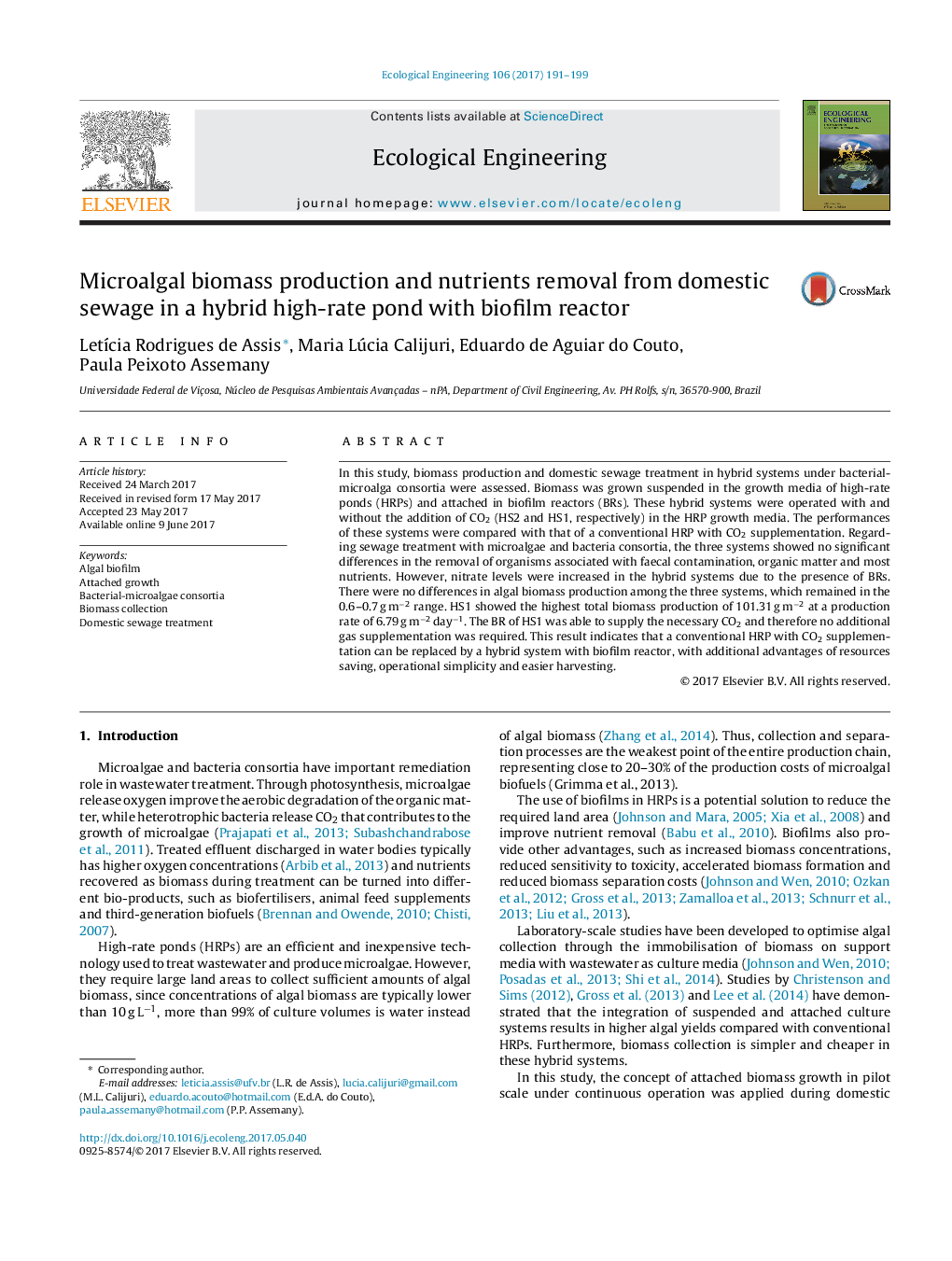| Article ID | Journal | Published Year | Pages | File Type |
|---|---|---|---|---|
| 5743835 | Ecological Engineering | 2017 | 9 Pages |
â¢Biofilm reactors had higher biomass production than conventional high-rate ponds.â¢Biofilm reactor overcame carbon limitation of the culture medium.â¢Hybrid systems were efficient for domestic sewage treatment.â¢Attached biomass was easily harvested, non-requiring extra concentration.â¢Attached biomass was suitable for animal supplementation and anaerobic digestion.
In this study, biomass production and domestic sewage treatment in hybrid systems under bacterial-microalga consortia were assessed. Biomass was grown suspended in the growth media of high-rate ponds (HRPs) and attached in biofilm reactors (BRs). These hybrid systems were operated with and without the addition of CO2 (HS2 and HS1, respectively) in the HRP growth media. The performances of these systems were compared with that of a conventional HRP with CO2 supplementation. Regarding sewage treatment with microalgae and bacteria consortia, the three systems showed no significant differences in the removal of organisms associated with faecal contamination, organic matter and most nutrients. However, nitrate levels were increased in the hybrid systems due to the presence of BRs. There were no differences in algal biomass production among the three systems, which remained in the 0.6-0.7 g mâ2 range. HS1 showed the highest total biomass production of 101.31 g mâ2 at a production rate of 6.79 g mâ2 dayâ1. The BR of HS1 was able to supply the necessary CO2 and therefore no additional gas supplementation was required. This result indicates that a conventional HRP with CO2 supplementation can be replaced by a hybrid system with biofilm reactor, with additional advantages of resources saving, operational simplicity and easier harvesting.
